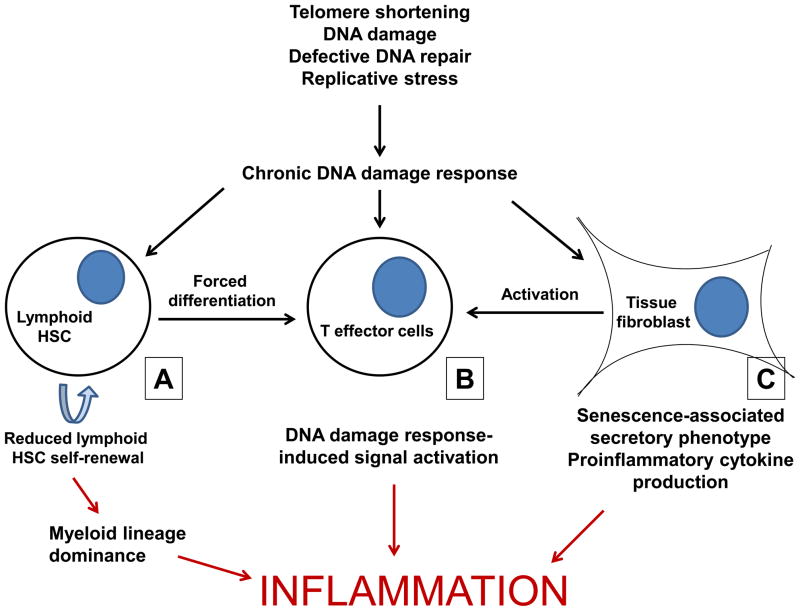Figure 1. DNA damage responses (DDR) are induced by many different age-associated DNA damage events and promotes inflammation through different mechanisms.
A) Accumulated DNA damage in lymphoid hematopoietic stem cells (HSCs) induces differentiation into mature lymphocytes and leads to an imbalance in the stem cell pool, which becomes dominated by myeloid precursors. The reduction in lymphoid HSCs, combined with thymic involution and reduced bone marrow output, leads to a reliance on innate immunity favouring broad inflammatory responses. B) The lymphocytes differentiating from damaged HSCs may harbor unfavorable mutations that then integrate into the adaptive repertoire. In addition, DDR induced by age-associated nontelomeric DNA damage or telomeric erosions can contribute to the activation of T effector cell populations and production of inflammatory mediators. C) Cellular senescence induced by DNA damage has also been shown to induce the production of inflammatory cytokines by a variety of cell lineages not directly related to the immune system, a process coined as senescence-associated secretory pattern (SASP). In addition to directly causing pathology, this inflammatory tissue environment can attract and activate lymphocytes in a bystander fashion, even in the absence of specific antigen stimulation.

